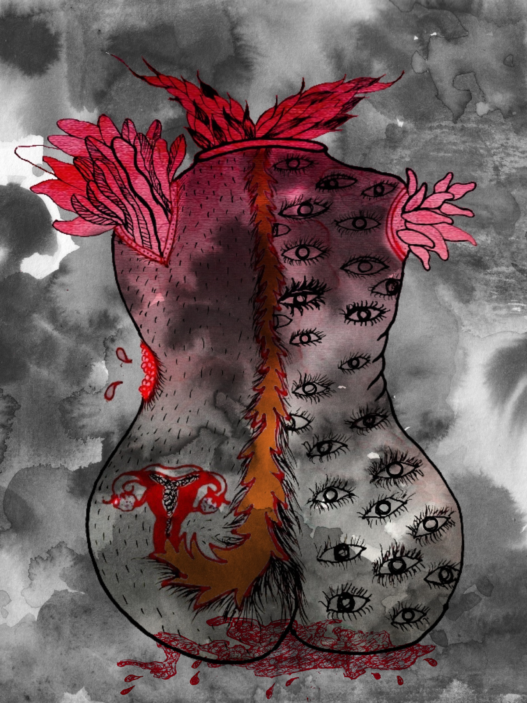In a world that celebrates and sometimes fixates on sexual intimacy, navigating the complexities of relationships where one partner identifies as asexual (ace) and the other as allosexual (allo) can indeed be challenging. Ace/allo relationships bring to the forefront the need for compromise, understanding, and open communication, as both partners work to create a fulfilling and harmonious partnership. This article delves into the dynamics of such relationships, explores potential compromises, and addresses questions about the future of monogamy in this context.
Understanding Ace/Allo Relationships
An ace/allo relationship refers to a romantic partnership between an individual who identifies as asexual and another who identifies as allosexual, experiencing sexual attraction as a part of their sexuality. These relationships can indeed be complex, as they involve differing levels of sexual attraction and desire. While some asexual individuals may feel comfortable engaging in sexual activities, many do not experience sexual attraction and may even find the idea of sexual intimacy uncomfortable or repulsive.
The Art of Compromise:
Compromise is the cornerstone of any successful relationship. In ace/allo partnerships, it’s especially crucial due to the differences in sexual attraction. The question of how to navigate compromise without undermining either partner’s needs or comfort is central. It’s important to acknowledge that no universal answer fits every relationship, as the dynamics are as unique as the individuals involved.
Consent and Comfort: In an ace/allo relationship, the allo partner should never coerce or pressure the ace partner into unwanted sexual activities. The foundation of a healthy relationship is built on respect for each other’s boundaries and autonomy.
Communication is Key: Communication lies at the heart of any thriving relationship, and ace/allo partnerships are no exception. Honest discussions about desires, boundaries, and expectations are essential to ensure both partners feel heard and respected. If one partner experiences sexual attraction while the other does not, open conversations can help navigate this difference. Together, the partners can find creative ways to maintain emotional intimacy without causing discomfort or distress.
Mutual Understanding: Both partners should strive to understand each other’s perspectives. Allo partners should respect the ace partner’s lack of sexual attraction and vice versa. This understanding helps foster empathy and patience, leading to a stronger bond.
Exploring Alternatives: Intimacy doesn’t solely rely on sexual acts. Partners can discover new ways to bond emotionally, intellectually, and romantically that align with both partners’ comfort levels. Creative approaches to physical intimacy can also be explored, ensuring that both partners feel valued.
“Life isn’t about waiting for the storm to pass; it’s about learning to dance in the rain and finding joy in the midst of life’s challenges.”
Vivian Greene
Monogamy and Relationship Dynamics:
In the context of ace/allo relationships, the question of ‘Can Monogamy Continue?’ is worth exploring. Monogamy traditionally involves exclusive romantic and sexual commitment between two partners. However, in ace/allo relationships, partners might need to redefine the boundaries of monogamy to ensure that both their emotional and physical needs are met.
Some couples might opt for a more open approach to monogamy, where allo partners seek sexual experiences outside the relationship with the ace partner’s consent. Alternatively, some couples might choose to prioritize emotional intimacy within their monogamous relationship while acknowledging that sexual needs could be fulfilled in different ways.
The Partner’s Role in Meeting Needs:
In any relationship, both partners play a role in fulfilling each other’s needs. However, this should never come at the expense of either partner’s comfort or consent. While it’s healthy for partners to make an effort to meet each other’s needs, it’s equally important to recognize and respect each other’s boundaries.
One critical issue that can arise in ace/allo relationships is the question of “unwanted sex.”.
Healthy relationships should never normalize or condone any form of non-consensual activity.
Addressing Concerns and Stereotypes:
The concern of finding love and navigating relationships when sexual attraction is a significant factor for many allosexual individuals is valid. However, it’s important to remember that successful ace/allo relationships are possible. There are instances of ace romance success stories, proving that love can transcend differences in sexual attraction.
Challenging Stereotypes: The suggestion to replace “sexual compromise” with “unwanted sex” underscores the importance of honest language. However, it’s essential to avoid painting all ace/allo relationships with the same brush. Some individuals within these relationships might find ways to engage in sexual activities comfortably, while for others, compromise might indeed involve refraining from sexual activities.
Research and Recommendations
As the landscape of relationships continues to evolve, research on ace/allo relationships remains limited. It’s crucial to approach these partnerships with an open mind and a nonjudgmental attitude. Understand that healthy relationships are not about molding someone into a specific role but about accepting and loving them as they are.
It’s not easy for experts, therapists, and psychologists to delve into these dynamics to provide guidance and support for couples navigating these challenges. Additionally, justice and social service professionals should be equipped to provide advice and assistance to ace/allo couples seeking help with conflicts related to their differing sexual orientations.
Conclusion
In conclusion, navigating an ace/allo relationship involves open communication, empathy, and a willingness to find compromise. While challenges may arise, love and connection can thrive when both partners are committed to understanding each other’s needs and fostering a relationship built on respect and mutual support. Remember that healthy relationships are about loving and accepting someone as they are, finding common ground, and building a future together based on shared values and emotional connection.
KEY NOTES:
Origins of the Terminology “ALLOSEXUAL”
The journey towards defining and describing non-asexual identities has been marked by a continuous evolution of language. The term “allosexual” began to gain traction around 2011, as a reaction to the use of the word “sexual” to describe individuals who aren’t asexual. Previously, the term “sexual” was employed to refer to those who experience sexual attraction and desire, but it came with its own set of issues and misconceptions.
Advocates for change argued against the usage of “sexual” due to several reasons:
- Confusion: The terms “sexual” and “sexuality” already encompass a range of meanings. The introduction of “allosexual” sought to clarify that it relates specifically to those who experience sexual attraction, not just sexual activity.
- Discomfort: Describing someone as “sexual” can carry connotations of objectification or hypersexualization. This could be unsettling for individuals who have experienced sexual trauma, those who intentionally practice chastity, and those marginalized by societal hypersexual stereotypes.
- Distinguishing Orientation from Behavior: “Sexual” could mistakenly imply an individual’s level of sexual activity rather than their underlying orientation. An individual’s orientation is about their inherent attractions, not just their behaviors.
Choosing Terminology and Addressing Concerns
The choice of terminology remains a personal one, and individuals may have reasons for favoring or disliking certain labels. While “allosexual” aims to create a clearer distinction, some criticisms of the term include:
- “Allo-” Implies “Other”: The prefix “allo-” means “other,” and using it to denote those who experience sexual attraction might seem in opposition to the “a-” prefix used for asexuality.
- Potential for Confusion: Some argue that “allosexual” is a less intuitive term compared to “non-asexual” and could lead to misunderstanding.
- Aesthetic Preferences: The sound and feel of the term might not resonate with everyone, leading to a lack of comfort.
In essence, the debate over terminology reflects the broader challenge of finding words that authentically encapsulate complex concepts and identities, and it highlights the diversity of perspectives within the LGBTQ+ community.ut consumption and impact. Today’s savvy individuals look for styles that align with their values—sustainability, quality, and versatility are increasingly prioritized over fleeting trends. This shift is evident in the growing popularity of capsule wardrobes and ethically produced garments.











